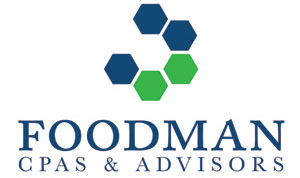When Bank Account Activity is not Consistent with the Customer’s Business was published by JD Supra on 7/25/18.
According to the Bank Secrecy Act (BSA), the Financial Crimes Enforcement Network (FinCEN) states that the main focus for Financial Institution ought to be on the reporting of suspicious activities. Meaning, where the bank “activity is suspicious or one for which there does not appear to be a reasonable business or legal purpose”. So, when a customer’s source of funds, volume and activity in an account is not consistent with the customer’s account profile provided when the customer’s account was originally opened, the related financial institutions should recognize and document that pattern of bank activity.
Here are some “Red Flags” noted in the BSA Manual for recognizing money laundering, terrorist financing, and fraud:
⦁ Customers Who Provide Insufficient or Suspicious Information.
⦁ Efforts to Avoid Reporting or Recordkeeping Requirements.
⦁ Funds transfer activity is unexplained, repetitive, or shows unusual patterns or payments or receipts with no apparent links to legitimate contracts, goods, or services.
⦁ Automated clearing house (ACH) transactions are frequently initiated through third-party service providers (TPSP) by originators that are not bank customers and for which the bank has no or insufficient due diligence.
⦁ A large volume of cashier’s checks, money orders, or funds transfers is deposited into, or purchased through, an account when the nature of the accountholder’s business would not appear to justify such activity.
⦁ Loans secured with pledged assets held by third parties unrelated to the borrower or by deposits or other readily marketable assets, such as securities, particularly when owned by apparently unrelated third parties.
⦁ A rapid increase in the size and frequency of cash deposits without a corresponding increase in non-cash deposits.
⦁ An inability to track the true account holder of correspondent or concentration account transactions.
⦁ Multiple wire transfers initiated by foreign nonbank financial institutions that direct U.S. banks to remit funds to other jurisdictions that bear no apparent business relationship with that foreign nonbank financial institution. Recipients may include individuals, businesses, and other entities in free trade zones and other locations.
⦁ In Trade Finance, items shipped that are inconsistent with the nature of the customer’s business and customers conducting business in higher-risk jurisdictions.
⦁ A customer purchases insurance products with termination features without concern for the product’s investment performance.
⦁ A bank is unable to obtain sufficient information or information is unavailable to positively identify originators or beneficiaries of accounts or other banking activity.
⦁ Payments to or from a company have no stated purpose, do not reference goods or services, or identify only a contract or invoice number.
⦁ Goods or services, if identified, do not match profile of company provided by respondent bank or character of the financial activity; a company references remarkably dissimilar goods and services in related funds transfers; explanation given by foreign correspondent bank is inconsistent with observed funds transfer activity.
⦁ Transacting businesses share the same address, provide only a registered agent’s address, or have other address inconsistencies.
⦁ Unusually large number and variety of beneficiaries are receiving funds transfers from one company.
⦁ Frequent involvement of multiple jurisdictions or beneficiaries located in higher-risk offshore financial centers.
⦁ A foreign correspondent bank exceeds the expected volume in its client profile for funds transfers, or an individual company exhibits a high volume and pattern of funds transfers that is inconsistent with its normal business activity.
⦁ Multiple high-value payments or transfers between shell companies with no apparent legitimate business purpose.
⦁ Purpose of a shell company is unknown or unclear.
⦁ Embassy, Foreign Consulate, and Foreign Mission Accounts business is conducted through personal accounts.
⦁ Customer receives large and frequent deposits from online payments systems yet has no apparent online or auction business.
⦁ Funds are generated by a business owned by persons of the same origin or by a business that involves persons of the same origin from higher-risk countries.
⦁ The stated occupation of the customer is not commensurate with the type or level of activity.
⦁ Persons involved in currency transactions share an address or phone number, particularly when the address is also a business location or does not seem to correspond to the stated occupation.
⦁ A large volume of cashier’s checks, money orders, or funds transfers is deposited into, or purchased through, an account when the nature of the accountholder’s business would not appear to justify such activity.
⦁ Transactions involving foreign currency exchanges are followed within a short time by funds transfers to higher-risk locations.
⦁ Multiple accounts are used to collect and funnel funds to a small number of foreign beneficiaries, both persons and businesses, particularly in higher-risk locations.
Don’t be a victim of your own making
Financial Institutions need to recognize “red flags” in order to accurately report suspected money laundering, terrorist financing, and fraud in Suspicious Activity Information section of the FinCEN Suspicious Activity Report (SAR). Consult your tax specialist if in doubt when determining if bank activity is suspicious or if there does not appear to be a reasonable business or legal purpose for a bank account.
https://www.jdsupra.com/legalnews/when-bank-account-activity-is-not-90801/





